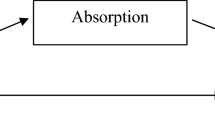Abstract
According to the cognitive perspective on gambling, regular gamblers persist in trying to win money at gambling because they hold a set of false beliefs about the nature of gambling, the likelihood of winning, and their own expertise. In order to investigate this claim, twenty seven university students were recruited who played one of three types of games at least twice a week: slot machines, video draw poker, and video amusement games. Subjects played their preferred machines on site (clubs, hotels and amusement arcades) first for at least thirty minutes and then the other two games for a minimum of twenty minutes each. During play, each subject spoke aloud into a microphone describing what he or she was doing or thinking about in the game. It was hypothesised that slot machine players would verbalise more irrational thinking than video poker or video amusement players and that slot machines would elicit more irrational thinking than video poker or video amusement machines. Most importantly, it was hypothesised that slot machine players would exhibit relatively greater amounts of irrational thinking when playing their preferred game. The data supported all three hypotheses. Out of all of the statements made by slot machine players when playing slot machines, 38% were categorised irrational. Furthermore, 80% of the strategic statements made by slot machine players while playing slot machines were categorised as irrational. These results are consistent with earlier work which showed high levels of irrational thinking in artificial gambling games. Together, the results provide support for a cognitive view of the origins of gambling problems.
Similar content being viewed by others
References
Anderson, G. & Brown, R.I.F. (1984). Real and laboratory gambling, sensation-seeking and arousal.British Journal of Psychology, 75, 401–410.
Caldwell, G.T. (1974). The gambling Australian. In D.E. Edgar (Ed.),Social change in Australia (pp. 13–23). Melbourne, Australia: Cheshire.
Daley, K. (1987). Encouraging ‘habitual’ gambling on poker machines. In M.B. Walker (Ed.),Faces of gambling (pp. 235–244). Sydney, Australia: National Association for Gambling Studies.
Dickerson, M.G., Fabre, J. & Bayliss, D. (1986). A comparison of TAB customers and poker machine players. In J. McMillen (Ed.),Gambling in the 80's. Griffith University, Queensland: National Association for Gambling Studies.
Gaboury, A. & Ladouceur, R. (1988). Irrational thinking and gambling. In W.R. Eadington (Ed.),Gambling Research: Proceedings of the Seventh International Conference on Gambling and Risk Taking, vol. 3 (pp. 142–163). Reno, Nevada: University of Nevada-Reno.
Gilovich, J. (1983). Biased evaluation and persistence in gambling.Journal of Personality and Social Psychology, 44, 110–126.
Hayano, D.M. (1977). The professional Poker player, career identification and the problem of respectability.Social Problems, 24, 556–564.
Johnson, J. (1985). Gambling as a source of government revenue in Australia. In G. Caldwell, B. Haig, M.G. Dickerson & L. Sylvan (Eds.),Gambling in Australia (pp. 78–93). Sydney: Croom Helm.
Ladouceur, R. & Gaboury, A. (1988). Effects of limited and unlimited stakes on gambling behavior.Journal of Gambling Behavior, 4, 119.
Langer, E.J. (1975). The illusion of control.Journalof Personality and Social Psychology, 32, 311–328.
Leary, K. & Dickerson, M.G. (1985). Levels of arousal in high- and low- frequency gamblers.Behaviour Research and Therapy, 23, 635–640.
Letarte, A., Ladouceur, R. & Mayrand, M. (1986). Primary and secondary illusory control and risk-taking in gambling (roulette).Psychological Reports, 58, 299–302.
MacMillan, G.E. (1985). People and gambling. In G. Caldwell, B. Haig, M.G. Dickerson & L. Sylvan (Eds.),Gambling in Australia (pp. 253–260). Sydney: Croom Helm.
Nisbett, R.E. & Wilson, T.D. (1977). Telling more than we can know: Verbal reports on mental processes.Psychological Review, 84, 231–259.
Walker, M.B. (1985). Explanations for gambling. In G. Caldwell, B. Haig, M.G. Dickerson & L. Sylvan (Eds.),Gambling in Australia (pp. 146–162). Sydney: Croom Helm.
Walker, M.B. (1987). Bridge for money: gambling with finesse. In M.B. Walker (Ed.),Faces of gambling (pp. 201–208). Sydney, Australia: National Association for Gambling Studies.
Walker, M.B. (1988). A comparison of gambling in TAB shops and clubs. In W.R. Eadington (Ed.),Gambling research: proceedings of the seventh international conference on gambling and risk taking, vol. 3, (pp. 65–82). Reno, Nevada: University of Nevada-Reno.
Author information
Authors and Affiliations
Rights and permissions
About this article
Cite this article
Walker, M.B. Irrational thinking among slot machine players. J Gambling Stud 8, 245–261 (1992). https://doi.org/10.1007/BF01014652
Issue Date:
DOI: https://doi.org/10.1007/BF01014652




